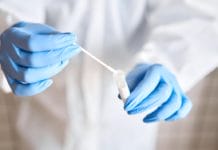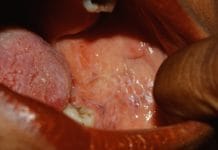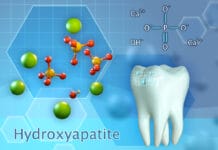We’ve all had patients with hypersensitive gag reflexes who can’t sit through a single bitewing, lurch the moment your hand touches their lower incisors, or are so anxious that they can’t make it through a prophylaxis. As many as 10% to 15% of people have a hypersensitive gag reflex.1
Given that the trigeminal and glossopharyngeal nerves pass through the medulla oblongata, which is close to the vomiting center of the brain, oral stimulation during a dental procedure isn’t just a psychological trigger for gagging but a real physical issue.1 Talking your patient through the process may not be effective or even practical.
As someone who has seen a fair share of nauseating moments in the dental office (I worked in pediatrics for two years), I’ve come up with a handful of tricks to try when my patients are unable to get through basic preventive care.
Salt
Some patients and hygienists swear by this technique. When salt stimulates taste buds, the chorda tympani nerve is activated, inhibiting the gag reflex.2
Have the patient sprinkle a pinch of salt on the tip of their tongue right before they open wide or need a few radiographs taken. You can also have your patient rinse and gargle with salt water just before the appointment. Remember that salt dilutes best in warm water, so you might give them a cup with a packet of salt and ask that they go rinse in the restroom just before you have them seated.
The best way to be sanitary about keeping salt in your operatory is to have a resealable bag with individual serving sizes of salt packets stored away.
As a general disclaimer, be sure to clear your patient of any medical conditions or dietary restrictions, such as those who require a low-sodium diet, usually individuals with heart disease, kidney disease, or high blood pressure.
Distraction
Psychological techniques directed at diverting and shifting a patient’s attention from the stimuli causing the gag reflex may be helpful for some.2
One of the most common things I did when I was taking radiographs on a patient with a sensitive gag reflex was to ask them to raise their right foot in the air. After a few seconds, I’d ask them to hold up three fingers on their left hand. Sometimes, I’d have them switch their hands and feet or change the number of fingers involved. By the point we’d made it through two to three fingers, the radiograph was already taken.
Nasal Breathing
The gag reflex doesn’t tend to be as sensitive if the patient is breathing through the nose instead of the mouth.3 Physiologically speaking, nasal breathing is more effective than breathing through your mouth, as oxygen intake can be 10% to 20% higher.4 Nasal breathing also prevents air flow from tickling the soft palate and uvula, which might vibrate during mouth breathing and further irritate a sensitive gag reflex.
If your patient tends to have chronic sinus congestion or allergies, ask them to take a decongestant or antihistamine a few hours before their appointment to ensure their nasal passages are clear.2
Topical Anesthetic Spray
The numbing spray people use for sore throats can also help desensitize their soft palate right before a dental appointment. The spray acts like a topical anesthetic. You might recommend that your patient bring some with them from home, or your office can keep some on hand as long as it’s used without any risk of cross-contamination.
Another option is to utilize topical anesthetic sprays that you purchase directly from your dental supplier, which typically contain stronger ingredients like benzocaine, similar to topical anesthetic gel used before injections.2
Schedule Appointments Later in the Day
Some people find that their gag reflex tends to be stronger in the morning. If that is the case, they may respond better to dental care scheduled toward the end of the afternoon rather than first thing in the morning.5
Nitrous Oxide
Nitrous oxide sedation may add a bit of time to a hygiene appointment, but so does a patient’s gag reflex. If you don’t have to worry about the patient feeling uncomfortable during hygiene treatment, they’ll be more comfortable, and you’ll be able to work more efficiently. Nitrous oxide works well when it comes to managing gagging reflexes.6
Acupressure
Another option that may help a patient’s gag reflex is using acupressure. Acupressure uses direct pressure at specific acupuncture points (acupoints). Depending on the acupoint, pressure can be applied with a thumb, finger, or with devices such as travel sickness bands.2,7
Acupoints used to control gagging include the Neiguan point (medial aspect of the forearm), Hegu point (concave area between the thumb and forefinger), Fiske point (near ear canal), and Chengjiang point (mentolabial groove between chin and lower lip).2,7
In Closing
Asking a patient to sprinkle salt on their tongue or hold up their fingers whenever they feel like gagging may not seem normal or even professional if it’s not something you’re used to doing. But when you approach the situation with a friendly demeanor and an understanding of the circumstances, I’ve found that most people will easily comply with these silly-sounding requests given the chance they might actually work. When they do, you’ve opened the door to reframe how your patients view their dental care.
Thanks to techniques like these, it is still possible to provide preventative and basic dental care to patients in general care settings without the need for more complex therapies, such as deeper sedation or general anesthesia. The key is to be sensitive to patient needs and concerns rather than attempt to “power through” them, potentially causing the patient to avoid additional dental appointments and necessary treatment in the future.2
Before you leave, check out the Today’s RDH self-study CE courses. All courses are peer-reviewed and non-sponsored to focus solely on high-quality education. Click here now.
Listen to the Today’s RDH Dental Hygiene Podcast Below:
References
- Sivakumar, S., Prabhu, A. (2023, March 12). Physiology, Gag Reflex. StatPearls. https://www.ncbi.nlm.nih.gov/books/NBK554502/
- Hajira, N., Khandelwal, P., Sachdeva, H., Khare, S. Combating the Hypersensitive Gag Reflex in Patients Undergoing Dental Treatment – A Review. International Journal of Contemporary Medical Research. 2020; 7(6): F11-F14. https://www.ijcmr.com/uploads/7/7/4/6/77464738/ijcmr_3110.pdf
- Dental Fear Central Web Team. (2022, May 29). 15 Top Tips for Dentists and Patients: How to Lessen the Gag Reflex. Dental Fear Central. https://www.dentalfearcentral.org/fears/gagging/
- Lörinczi, F., Vanderka, M., Lörincziová, D., Kushkestani, M. Nose vs. Mouth Breathing – Acute Effect of Different Breathing Regimens on Muscular Endurance. BMC Sports Sci Med Rehabil. 2024; 16(1): 42. https://www.ncbi.nlm.nih.gov/pmc/articles/PMC10858538/
- Bailey, E. (2018, August 20). A Surprising Symptom of Anxiety. HealthCentral. https://www.healthcentral.com/article/anxietyinduced-gagging-why-it-happens-how-to-stop-it
- Mehdizadeh, M., Mohammadbeigi, A., Sharifinejad, A. An Overview About New Methods in Management of Gag Reflex during Dental Treatment: A Systematic Review. J Dent (Shiraz). 2023; 24(4): 372-381. https://www.ncbi.nlm.nih.gov/pmc/articles/PMC10749434/
- Rohmetra, A., Kulshrestha, R., Singh, K., Jaiswal, A. Acupuncture Therapy in Orthodontics – A Review. Advances in Dentistry and Oral Health. 2016; 2(3): 555586. https://www.researchgate.net/publication/321312383_Acupuncture_Therapy_in_Orthodontics_-_A_Review











